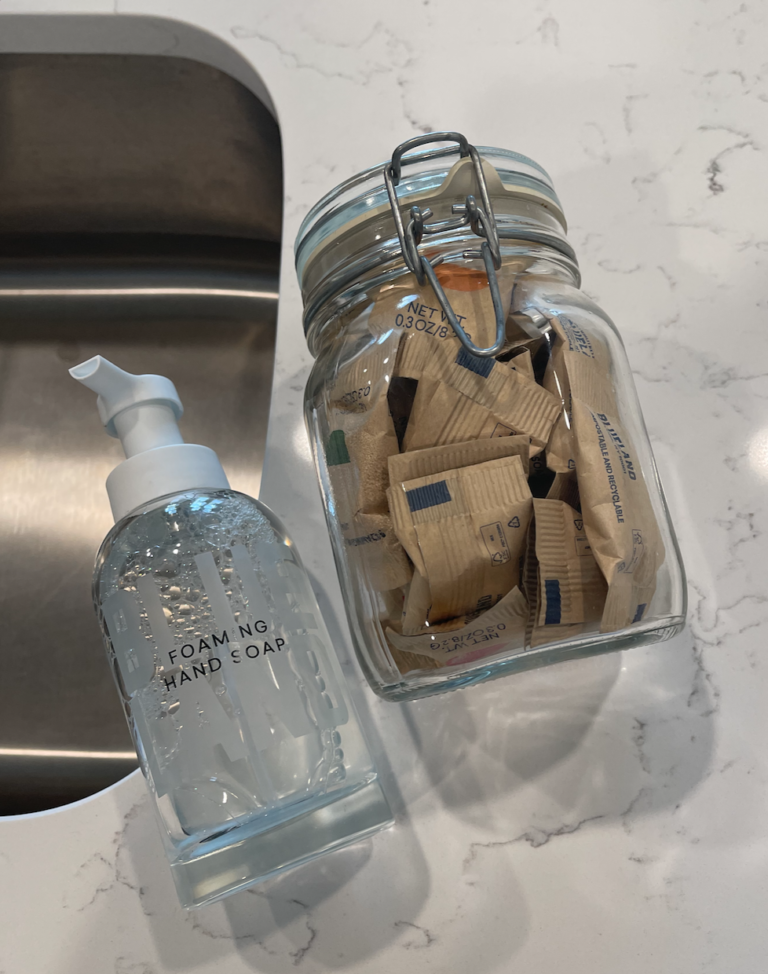
Introduction
Researching what’s the best product for _______ (fill in the blank) is almost never fun to do. Sometimes if I’m looking at a brand I’m unfamiliar with, I’m looking for what I do know. Usually that would be a label I recognize (in this case, Certified B) or an ingredient I don’t.
Certified B Corp is one of the labels that brands are very proud of. Their certification symbol is the gold standard across industries for business. It’s the mark for a “good” corporation.
But unless you know what that symbol means, then it has no value to you. The natural next question then, is what does the B Certified symbol represent?
In this blog post I’m going to cover what a Certified B Corp is (who’s behind it the symbol/certification), what they do, and why you should care. This educational journey is fun and insightful but there’s a lot to unpack so buckle up. I’ll make the ride as smooth as possible.
Why should you care?
Why you should even keep reading this? You’re probably here on your own time, and I’ve just said there is a lot to unpack. But, remember how I also just said researching kinda sucks?
Well, knowing what the B Certification represents can help you make faster and more informed decisions when you’re buying things. This can save you time.
If you like what the Certified B label represents, then you automatically know the brand you’re looking at is legit (up to B Corp standards). Instead of looking up brand after brand, you can spot the Certified B label, add it to cart, and move on with your life.
That doesn’t mean you shouldn’t still figure out what exactly you’re buying, but it does make an initial decision much easier, especially if you’re in a hurry.
There are thousands of brands that are currently certified, and more are added all the time. Chances are, knowing what the certification represents can save you time on any isle of the supermarket or any store in the mall.
Popular certified brands you likely already know include Ben and Jerry’s, Patagonia, Blueland, and Stasher.

Terms to Know before Moving On
Certified B Corporation (Corp) – This is a company that has achieved certification.
B Lab – The nonprofit organization that awards B Certification (these are the people that actually do the assessing).
Standards Advisory Council (SAC) – These are the people that create the standards B Lab uses to assess companies that want the B Certification. They consist of experts in business and academia.
So what is “Certified B”?
Building on the terms, Certified B refers more to the certification a company is awarded. It is basically the status of the company. That award or status is earned after a lengthy assessment by a nonprofit lab called “B Lab.”
According to B Corp, “Certified B Corporations are businesses that meet the highest standards of verified social and environmental performance, public transparency, and legal accountability to balance profit and purpose….
“Society’s most challenging problems cannot be solved by government and nonprofits alone. The B Corp community works toward reduced inequality, lower levels of poverty, a healthier environment, stronger communities, and the creation of more high quality jobs with dignity and purpose.”
If a 5 star restaurant rating is referring to the dining experience, the food taste, the quality of your dish, and so on; then a B certification refers to how the kitchen employees are treated, do they have good benefits, is the venue transparent about all this, is their supply chain “environmentally friendly,” etc.
This is essentially a broader look at the company, rather than just a zoomed in look at the product you get in your hand.

How the Certification Process Works - Crash Course
Be Impact Assessment (BIA)
To begin, someone from a company wishing to become certified will take a detailed survey. That survey asks questions based on measurable and quantifiable data. That survey is called the B Initial Assessment or BIA. The result of the BIA is an initial score out of 200 with a score of 80 meaning you “pass.”
The BIA doesn’t actually certify, it’s just the first free step in the process. Think of it like a practice exam before the real exam.
Assessment Review
From the BIA, the company then schedules a “Assessment Review” and submits certain documents. All companies have to submit the documents that B Lab requests and some companies have to conduct a review call (but not all).
If they are asked to participate in a review call, then that takes them between 60 and 90 minutes (not including preparation time) and B Lab asks questions further clarifying answers from previous steps.
Additional Documentation
After the BIA and the Assessment Review, the company will submit even more documentation for the B Lab to review. Yes, a second round of documentation. They may ask even more clarifying questions here too.
Background Checks
Finally, background checks. At this somewhat final stage the company is subject to a background check. B Lab looks at “public records, news sources, and search engines for company names, brands, executives/founders, and other relevant topics.”
Certification and Beyond
If the company achieves a score of 80 or above after all this, they achieve certification. From that point on, they update their assessment answers every 3 years and have to maintain the 80+ score.
Additionally, each year, 10% of certified companies are subject to site visits where B Lab confirms their assessment under even more scrutiny than before.
All Certified B Corps share their reports at bcorporation.net. And I also have an example from Patagonia linked further down.
Free BIA (get a preliminary score) > Assessment Review > Background Checks (get a final score, 80+ is certified) > Site Visits and 3 year recertification (forever and ever)
Process Summary
That was a lot, so let’s summarize the process quickly:
Free BIA (get a preliminary score) > Assessment Review > Additional Documentation > Background Checks (a final score of 80+ is certified) > Site Visits and 3 year recertification (forever and ever must maintain 80+ score)

More on the Certification and Process
If a company wants to go through the certification process, they have to seek it out themselves and pay a variable amount. That amount varies based on revenue and starts at $1,000. Their website shows the audit cost going up to $50,000, where anything beyond that is for companies with revenue beyond 1 billion.
They claim on their website that 1 out of every 3 applicants becomes B Certified. At first that might sound kind of high for the apparently rigorous standards they represent.
But, these are companies that are likely going through the process because they think they’ll measure up. So only ⅓ of companies that already think they’ll certify actually do.
Just like you don’t pay for test prep and then sit for the SAT or ACT exams if you think you’re going to fail, I can’t imagine companies doing that either.
Grow Ensemble is a great example of a company that applied for certification, scored a 25, and was excited to learn how to improve. It’s especially eye opening to see how rigorous certification was for them.
What does a Certified B report look like?
The report itself covers 4 major sections: governance, workers, community, and environment.
They have a really great visual of Patagonia’s report from 2011 on their site with a more detailed breakdown.
Why should I care? Pt.2
Earlier I said a B Certification gives you a broader look at the company, not just the product you get in your hand. That’s why you should care, because the product you end up consuming is only the tip of the iceberg in regards to impact.
That metal straw you purchase for $10 isn’t just a hunk of manufacture metal. It represents a deep impact on where the metal was mined, who worked on the advertising team at corporate, who worked the metal mine, who lives in the community that provides those materials, and the list goes on and on and on.
Certified B looks at the whole iceberg and gives brands a stamp of approval based on the iceberg we don’t see, the part under the water. And if the company fails to measure up to the 80 out of 200 then they help the brand improve in a variety of ways.
And as a bonus, as a natural result of the process, the iceberg underwater becomes more and more accessible. That’s what it means to be transparent, we (the consumers) get to see all the stuff that some companies want to hide.

Conclusion
If you’ve stuck with me, then you can see how serious the B Certification is.
Knowing what goes into the certification makes seeing it on a product at the store a completely different experience.
Even if that the B certified symbol isn’t quite enough info for you to just add an item to your cart, you can at least rest assured that more info on the brand is readily available because of how transparent B Corporations must be.
Overall, it’s clear why brands are proud to sport this badge of honor whenever they can, they’ve put so much work into getting it! I certainly look for it when I’m checking out new brands and I hope you will too.
Supporting brands that hold themselves to a higher standard is voting with our dollars. I want companies to see that I’ll put my money into goods and services that are sustainably produced all along the supply and production chain.
Sustainability is so much more than how an item is packaged or what it’s made of.
When companies see that we, as consumers, care about these things, they’re motivated to invest all the time and effort into creating a company that is worthy of the B Certification. And then actually investing the time and effort into the process.
So when we create that motivation for brands, when we look for the B Certified symbol, we are making sustainable choices and encouraging the corporate world to follow along with us.
Thanks for joining me today! If you liked this content and want to see more, please subscribe to my newsletter. You can do that here!
If you want to read about 2 of my favorite B-Certified and sustainable brands, read my reviews on Stasher bags and Blueland hand soap!
Sustainably is supported by readers like you. When you buy through links on this site, we may earn an affiliate commission at no additional cost to you. You can read more about affiliate links on our “Affiliate Marketing…” page.
Pingback: Grove Collaborative: Are they really sustainable? - Sustainably